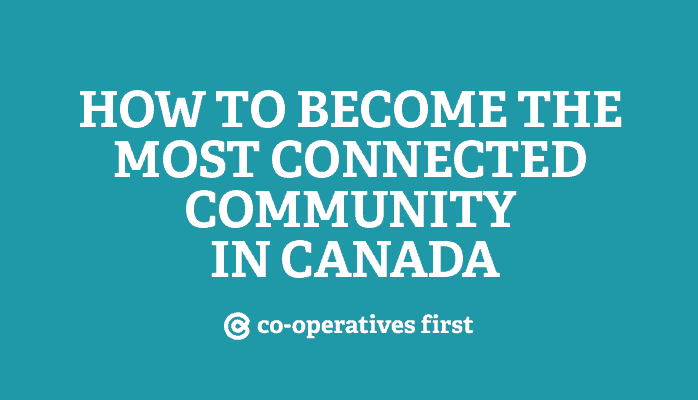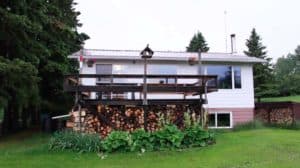The most connected community in Canada
You might not expect to find the country’s most connected community in a rural setting, but folks in Olds, Alberta play by their own rules.
Nominated for a Smart 21 global award for community connection, the community of Olds has invested in ensuring that every home and business has access to super high-speed fibre optic cable connectivity (90% have opted-in), the hospital has free internet, and community parks and commercial areas have open access WIFI.
Forward-thinking community leaders
Alongside this infrastructure development, a unique collaboration of schools, governments and community leaders brought together by The Olds Institute for Community & Regional Development created the Community Learning Campus and O-NET, a local internet service provider. These combined developments led to the Olds High School being one of two high schools world-wide showcased in an Innovative Learning Environments study by the Organization for Economic Cooperation and Development (OECD). Plus, the college is one of only two “Apple Distinguished” schools in Canada, due to the impact of its broadband capacity on students and programming.
The results have been increased high school completion rates, better diploma exam results and expanded course offerings. Moreover, community participation and engagement in general has increased, and the town is capable of attracting entrepreneurs and talent from near-by Calgary.
This town is seriously forward thinking. Seniors in town even helped create a Digital Network Area Centre (the DNA Centre) at the library, which is a technology demonstration centre and creation space that includes a 3D printer.
How did Olds do it? For infrastructure, by forming a local company that had the interests of the community at the core of its mission. For the rest, by developing a culture interested and able to use this future-focused utility.
Connectivity and local, economic priorities
The town administration had identified connectivity as vitally important to the local economy and wanted to establish itself as a small to medium-size enterprise capital. They wanted infrastructure that would be “future-proof” – that will grow and adapt to the emerging technology boom – and fibre optics was the answer to that.
Mitch Thomson, Executive Director for Olds’ internet service provider, O-NET, said the big telecommunications companies weren’t providing the level of connectivity and service that the community wanted.
“The community went to the incumbent providers in the province and said ‘Hey, would you partner with us to develop something that is world class?’,” Thomson said. “They weren’t willing to make the investment in a small centre, so the community basically took it on itself to develop the network.”
Locally-owned serves local interests
O-NET is a for-profit corporation owned by the non-profit Olds Institute for Community and Regional Development. The profits from the ISP go to the Institute, which distributes the funds to community-based projects.
Last year, $800,000 generated by the ISP was invested back into the community. Funds have gone to the community splash park, the Boys and Girls Club, an entrepreneurship facility, search and rescue, and the women’s shelter. They’ve also created a cyber-senior’s program, where young people mentor seniors about computers and connectivity. The program not only increases the skills of local seniors, it reduces social isolation as well.
Moreover, last year, O-NET retained over $4 million of revenue (wealth) that would have left the community if the service provider had been an external telecommunications company.
How the co-op model fits in
While O-NET is not a co-operative, Thomson said that they seriously considered the co-operative model when starting the ISP. In the end, because they had strong municipal support, it made sense to pair a for-profit corporation with a non-profit beneficiary as a solution for profit distribution and an opt-in option for residents and business owners.
“We feel very good about the co-op model and think it’s an excellent option,” Thomson said. For communities where municipalities are unwilling to take the risk of developing the infrastructure, individual community members could work together to do it themselves through a co-operative, he said.
Thompson’s right. Co-ops are a natural fit for treating broadband as a utility. Similar to how electricity, water, and other utility co-operatives have developed infrastructure through much of rural North America, high speed is the logical next wave. The co-op model allows for not only local ownership and an opt-in alternative to government, but also price control, profit distribution, and decision-making about how to best serve community interests.
In the US, over 750 communities have created their own ISP, many based on the co-op model. In Canada, too, villages like Lawrencetown in Nova Scotia, Hamiota in Manitoba, and others are tackling this opportunity on their own using the co-operative business model — it shows others are vying for the title most connected community in Canada.
The benefits of being the most connected community in Canada
Since creating its own fibre optic ISP, Olds has experienced economic growth, according to Thomson. Because of its broadband capacity, several businesses have moved to, developed, or expanded in Olds. His list includes an implement manufacturer, a small pharmaceutical company, a few oil and gas companies that have moved their headquarters to Olds, and people who work from home and choose to live in Olds because of the broadband advantage.
The population in Olds has also grown. Thomson compares Olds to other communities in Alberta that, 10 years ago, were the same size. Since creating O-NET, Olds has grown by around 2,000 people, while other communities have remained the same.
While high quality, locally-owned internet is probably not solely responsible for this impressive growth, it certainly helps provide a strong foundation for developing numerous benefits from the utility. These benefits in turn help attract growth and improve investment-readiness.
For communities interested in starting their own ISP, Thomson said Olds is happy to provide guidance and recommend the co-op model. If you’re interested in learning more about locally-owned broadband and the co-operative model, and have a project in mind, contact us.






